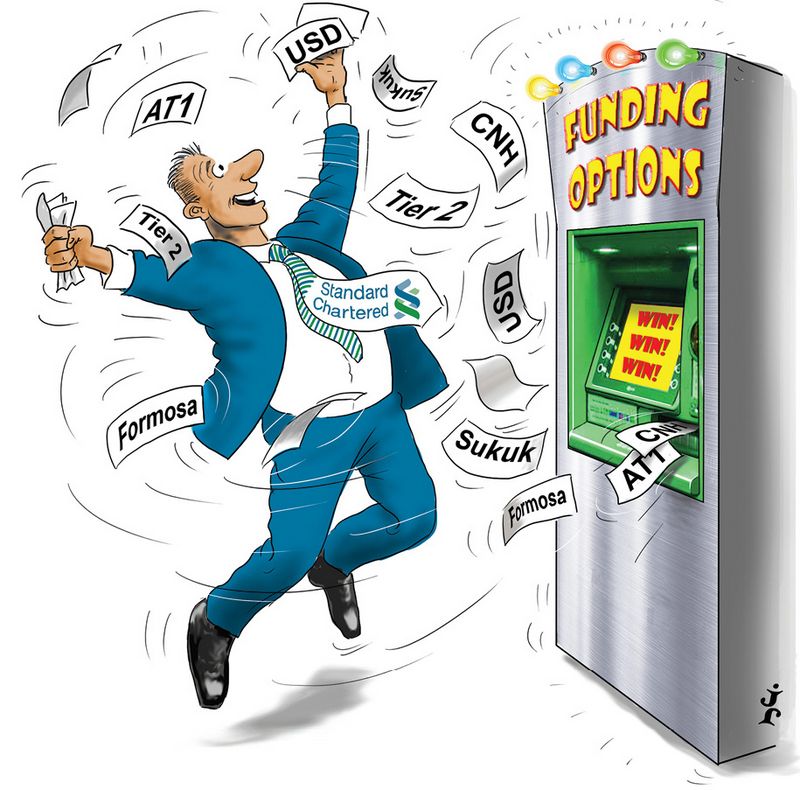First port of call:
Issuers from the Middle East had to be nimble and open-minded when it came to funding options during a turbulent 2020. For its role in helping borrowers of all stripes find the solutions they needed to navigate the markets, Standard Chartered is IFR’s Middle East Bond House of the Year.
![]()
Standard Chartered played a key role in heavyweight sovereign issuance in the Middle East, as economies in the region were squeezed by the pandemic and a dramatic slump in oil prices. Stress in the markets fed into the banks who leant on Standard Chartered to help access much-needed liquidity, while for corporates it was a year of innovation.
“The market was shut for six weeks, but despite that, the results for 2020 were record-breaking in terms of volumes and number of deals,” said Salman Ansari, Standard Chartered’s head of capital markets West.
“In borrowers’ times of distress, the first call is to the bank they have full confidence in. Whether it’s for the public markets or private solutions, we’re very fortunate to have been the first call a lot of clients made.”
The bank more than doubled its league table volumes from 2019 to 2020, according to Refinitiv data, topping the rankings with almost US$20bn of league table credit, with deals worked on ranging from US$150m to US$10bn in size. StanChart has more than US$4bn of clear water to the second-placed bank. Market share leapt by almost five percentage points to 15.5%.
The bank was at the coalface in April, helping two of the Gulf's powerhouses, Qatar and Abu Dhabi, reopen the market and raise US$17bn between them to support their balance sheets.
Repeat business would prove to be a common tale, with the bank holding a top-line position on every deal for Abu Dhabi, Bahrain and Oman.
Indeed, StanChart’s sovereign business won mandates from almost every major issuer in 2020 with Saudi Arabia, Dubai and Sharjah also in the portfolio.
Capital erosion
Economic stress, meanwhile, led to headaches for the region’s banks, which Ali Ahmad, head of FIG capital markets for Africa and the Middle East, said were facing a liquidity crunch and potential capital erosion from NPLs.
“It was important to be close to clients, as they faced funding requirements or holes in the balance sheets,” said Ahmad. “They have to trust you with that info.”
With ballooning spreads in March and April making the traditional US dollar market unpalatable, StanChart led banks to private placements as well as the possibilities in Asia.
Authorities had infused the Chinese system with liquidity, while Formosa levels were also attractive because of the persistent Taiwanese life insurance bid, typically for 30-year deals with five-year call options.
“We were able to do Formosa deals just below secondary levels, where in dollars you would have paid 50bp–60bp,” said Ahmad. “Then we had currencies like renminbi, raising almost US$2bn-equivalent for banks, all well inside the dollar curve.”
Another pressure point during the year was how the big entities in the Middle East would treat their capital instruments coming up for call, particularly when Oman’s Bank Dhofar said it would not redeem its US$300m bond at the first opportunity in May.
Sights turned to First Abu Dhabi Bank and Emirates NBD, two far bigger banks by assets than Dhofar, with bonds callable in June and September. Here was where market participants expected a true precedent to be set for the region.
FAB earned praise from bankers for its investor-friendly stance when it redeemed the notes, before StanChart acted as one of three global coordinators for ENBD’s AT1 in July which market players took as a positive sign that it would call its bond.
Corporates drove innovation in ESG, with the bank helping to structure and break fresh ground with a trade for Etihad Airways.
Etihad’s US$600m five-year unlisted transition sukuk will finance its shift to a greener future, marking the first of its kind and the first sustainability-linked bond from the high-emitting airline industry.
The UAE flag carrier claimed another first for sustainable finance with an unusual framework that allows it to issue either project-specific use of proceeds deals, or sustainability-linked instruments that tie financing costs to achieving company-wide ESG targets.
“It shouldn’t be considered a structure that fits well just for airlines, but pretty much anyone in a brown industry,” said Sarmad Mirza, executive director for MENA DCM.
To see the digital version of this report, please click here
To purchase printed copies or a PDF of this report, please email gloria.balbastro@lseg.com

